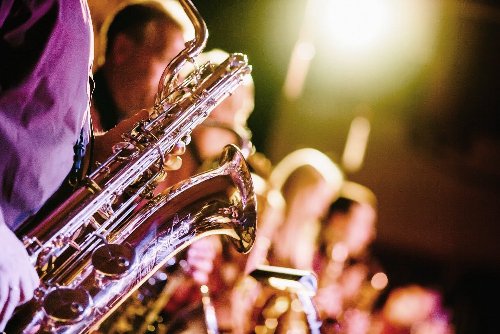
The rise of electric bicycles has added a fascinating new dimension to athletic training and overall performance improvement. Once considered a novelty, e-bikes have evolved into highly effective tools for athletes seeking to fine-tune conditioning, refine endurance, and sharpen recovery without compromising intensity. While traditional cycling already holds an esteemed role in cross-training for numerous sports, the added boost of pedal assistance unlocks benefits that extend far beyond convenience. E-bikes allow riders to expand their training environment, control fatigue with greater precision, and elevate their body's readiness for competition in ways that feel both invigorating and practical. This unique blend of athletic support has solidified e-bikes as a serious instrument in the pursuit of sports excellence.
Enhancing Cardiovascular Endurance
Endurance is the foundation of nearly every sport, whether it is played on a court, in a field, or across miles of open road. E-bikes offer a dynamic way to extend cardiovascular training by enabling athletes to ride farther and longer without reaching exhaustion too quickly. Pedal assistance provides just enough support to maintain consistent heart rate zones ideal for aerobic conditioning, reducing the risks of overexertion while still strengthening the cardiovascular system. The ability to regulate output means that athletes can stay active for longer sessions, developing the type of endurance that translates directly into game-day stamina. By carefully balancing effort with assistance, e-bikes bridge the gap between intensive training and sustainable long-term conditioning.
Supporting Muscle Development
Building strength requires more than heavy weights in the gym. Muscular development benefits from resistance, controlled motion, and repetition, all of which are achievable on an e-bike. Riders can adjust assistance levels to replicate demanding climbs, giving leg muscles the type of sustained workload that creates strength gains. The variety of terrains accessible on an e-bike, from steep inclines to rolling hills, ensures that muscle fibers are challenged in diverse ways that build both power and resilience. Incorporating e-bike sessions into a training regimen enhances lower body development while also engaging stabilizing muscles in the core and back. This balanced approach allows athletes to cultivate the strength necessary for explosive movements without relying solely on traditional training formats.
Refining Recovery Strategies
Active recovery often separates peak performers from those who plateau. E-bikes serve as a powerful recovery tool because they allow athletes to remain mobile while controlling effort levels. Gentle rides with light assistance promote blood circulation, which accelerates the repair of fatigued muscles and reduces stiffness after strenuous workouts. Unlike complete rest, low-intensity activity on an e-bike supports joint mobility and keeps the cardiovascular system engaged without undue strain. Having a recovery method that feels both restorative and enjoyable encourages athletes to incorporate it more consistently. Even practical considerations such as securing equipment with a reliable ebike lock support the routine, as maintaining a safe environment ensures focus remains on training rather than logistics.
Expanding Training Environments
Exposure to diverse environments stimulates adaptation, which is critical in athletic development. E-bikes open the door to landscapes that may otherwise feel daunting, from challenging mountain roads to extended urban circuits. This versatility creates opportunities for athletes to train in varied conditions without becoming overly fatigued. Different terrains sharpen coordination, build technical skills, and test adaptability, all of which translate across sports disciplines. The reliability of pedal assistance ensures that challenging routes remain manageable, preventing burnout while preserving the thrill of exploration. The flexibility to broaden training grounds makes e-bikes invaluable in keeping training fresh, motivating, and full of discovery. Key mechanical innovations such as a high-quality motor make these possibilities seamless by ensuring consistent performance across demanding settings.
Sharpening Mental Toughness
Sports performance thrives on psychological resilience as much as physical capability. E-bikes play a surprising role in cultivating mental toughness by exposing athletes to extended periods of controlled challenge. The freedom to scale intensity up or down creates an environment where focus, pacing, and concentration are tested continuously. Riders learn to embrace discomfort in manageable increments, training the mind to remain engaged even during fatigue. This process fosters confidence, as athletes witness tangible progress in their ability to handle diverse conditions with composure. The mental lift provided by accomplishing routes that once seemed unattainable carries over into competition, reinforcing the mindset required to excel under pressure. Combining physical benefits with psychological fortitude ensures that the impact of e-bike training reaches well beyond the saddle.
The evolution of e-bikes into a tool for sports performance highlights how innovation can enhance tradition. By improving endurance, supporting muscle growth, refining recovery, expanding training environments, and sharpening mental toughness, e-bikes extend far beyond convenience. They represent a method of training that integrates precision, variety, and adaptability into athletic preparation. Athletes who embrace this resource discover that the benefits are not confined to cycling but ripple across every arena of competition. The blend of physical conditioning and mental development makes e-bike training a forward-looking complement to traditional regimens, shaping a more complete and resilient athlete ready for the challenges ahead.
EDITORIAL POLICY
The Flash List is dedicated to providing trustworthy editorial content by maintaining strict ethical standards, journalistic integrity, and credible professionalism regardless of any remuneration as working media. The Flash List is not affiliated with third-party companies mentioned and makes no endorsement or guarantee expressed or implied. The preceding article, which contains affiliated link(s) for which compensation was received, is intended for informational reference only and does not constitute advice of any kind. Moreover, a qualified professional should be consulted regarding any lifestyle consideration, medical treatment, or monetary transaction, etc. Content is published in accordance with USFTC regulations and terms and conditions.
MORE ON THE FLASH LIST
































